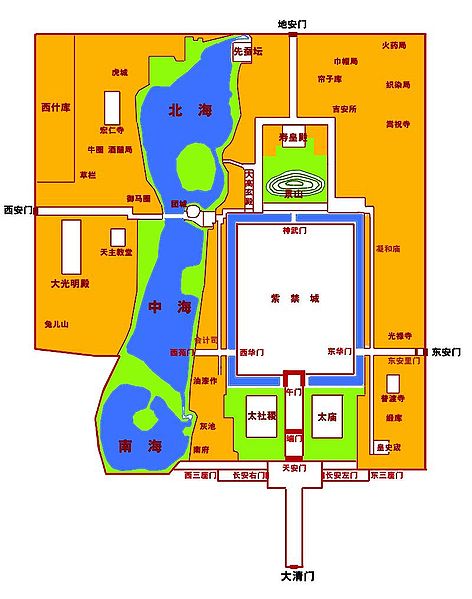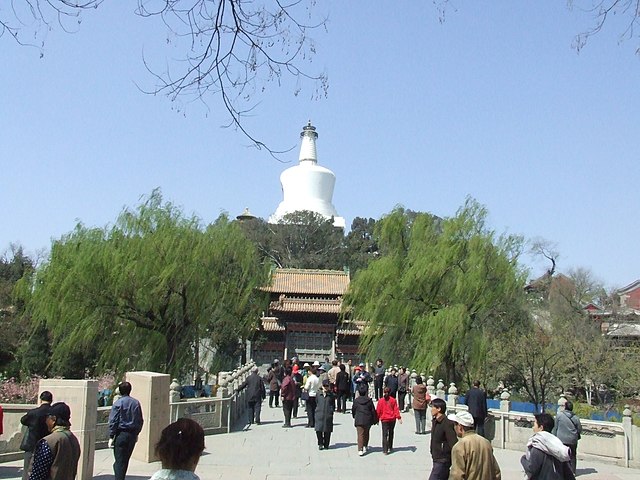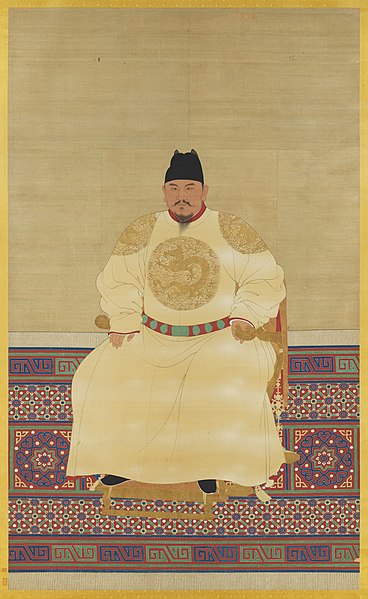The Imperial City is a section of the city of Beijing in the Ming and Qing dynasties, with the Forbidden City at its center. It refers to the collection of gardens, shrines, and other service areas between the Forbidden City and the Inner City of ancient Beijing. The Imperial City was surrounded by a wall and accessed through seven gates and it includes historical places such as the Forbidden City, Tiananmen, Zhongnanhai, Beihai Park, Zhongshan Park, Jingshan, Imperial Ancestral Temple, and Xiancantan.
Outline of Beijing's Imperial City. The large white space on the right is the Forbidden City.
The Gate of China, formerly the formal gateway to the Imperial City. This view is from the Zhengyangmen. Behind the Gate of China is Tiananmen and the Forbidden City.
Tiananmen, the southern gate of the Imperial City
The Beihai Park, a former imperial garden centred on one of the lakes which cover most of the western part of the former Imperial City.
The Ming dynasty, officially the Great Ming, was an imperial dynasty of China, ruling from 1368 to 1644 following the collapse of the Mongol-led Yuan dynasty. The Ming dynasty was the last imperial dynasty of China ruled by the Han people, the majority ethnic group in China. Although the primary capital of Beijing fell in 1644 to a rebellion led by Li Zicheng, numerous rump regimes ruled by remnants of the Ming imperial family—collectively called the Southern Ming—survived until 1662.
Portrait of the Hongwu Emperor (r. 1368–98)
The Great Wall of China: Although the rammed earth walls of the ancient Warring States were combined into a unified wall under the Qin and Han dynasties, the vast majority of the brick and stone Great Wall seen today is a product of the Ming dynasty.
A 17th-century Tibetan thangka of Guhyasamaja Akshobhyavajra; the Ming dynasty court gathered various tribute items that were native products of Tibet (such as thangkas), and in return granted gifts to Tibetan tribute-bearers.
Portrait of the Yongle Emperor (r. 1402–24)








